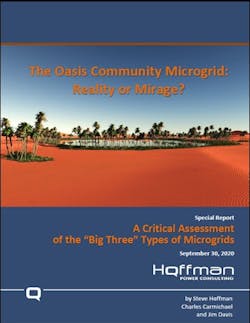In the last few decades, many commercial/industrial (C/I) energy users, universities, military bases, and public facilities around the world have implemented all types of microgrids to reduce electric power costs, incorporate clean power (decarbonize), and enhance power reliability and quality. Today, another benefit of microgrids has emerged that further strengthens their value proposition: enhanced electric power resilience.
Each of the 2,200 existing microgrids provides resilience for a single customer (e.g., C/I user, university, or military base). In contrast, the emerging community microgrid provides all the benefits of its conventional cousin – plus resilience – for multiple customers (or even an entire community).
Extending this evolution, a handful of U.S. communities have built a third type of microgrid – one that acts as a centrally-located refuge (an “oasis”) for community residents during extreme events. These few existing oasis community microgrids have demonstrated their resilience and decarbonizing capabilities, with other benefits.
Starting from the well-established conventional microgrid market, this comprehensive report describes the community microgrid market opportunity, market drivers, business models, benefits/value, barriers to implementation (and recommended solutions), prototype installations, and recent regulatory/legislative activity. The report also describes insights from COVID-19 regional and local health, safety, and economic impacts that may strengthen the case for these microgrids.
